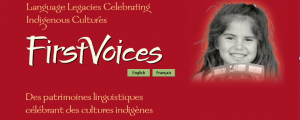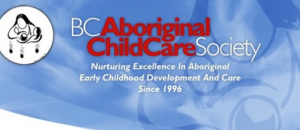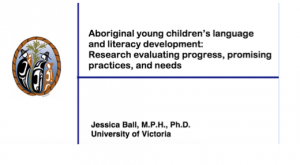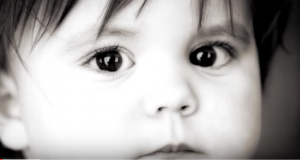1. The link below is for the Reconciliation Canada website. The “About Us” section tells its audience that the idea around Reconciliation Canada was “born from the vision of Chief Dr. Robert Joseph, Gwawaenuk Elder.” Reconciliation Canada provides information and resources to help engage individuals, groups, and communities in discussions and experiences related to reconciliation with the purpose of “revitaliz(ing) the relationships among Indigenous peoples and all Canadians.” This website offers “Programs & Initiatives,” suggestions for how to “Get Involved,” “News & Events,” “Resources,” how to “Contact” them, and how to “Donate.” I found the resources section especially helpful from the perspective of an educator because it provides resources to access the topic of reconciliation from a variety of sources and instructional strategies, including videos, impact stories, useful links, shareable documents, and toolkits.
Specifically, one video I felt was very powerful was a TEDxEastVan talk by Chief Dr. Robert Joseph which shared a message of hope for reconciliation and that “we are all one.” Chief Dr. Joseph’s message was clear, that reconciliation is “for all of us,” and he questioned and then discussed what reconciliation would look like in the future. The talk can be found at: http://reconciliationcanada.ca/chief-joseph-speaks-at-tedx-eastvan/
The Reconciliation Canada main website information is:
Reconciliation Canada. (n.d.). Retrieved 18 October, 2016, from: http://reconciliationcanada.ca/about/about-us/
2. The next link is to an article in a chapter of a virtual textbook, AFMC Primer on Population Health. The section discusses the profound impact of colonization, specifically the impact of residential schools, loss of language and culture, and western values and laws forced on Indigenous populations in Canada, and the lasting health effects that are the consequence. In addition to this, the significant differences between Indigenous healing practices and western medicine, as well as the potential for integration of these two is touched on.
Indigenous people’s health in Canada. (n.d.). AFMC Primer on Population Health, The Association of Faculties of Medicine of Canada Public Health Educators’ Network. Retrieved 20 October, 2016, from: http://phprimer.afmc.ca/Part1-TheoryThinkingAboutHealth/Chapter3CulturalCompetenceAndCommunication/Indigenouspeople146shealthinCanada
(License: Creative Commons BY-NC-SA)
3. The following link is for the National Collaborating Centre for Aboriginal Health (NCCAH) which was established in 2005 by the Government of Canada and is one of six National Collaborating Centres for Public Health in Canada. The NCCAH is hosted by the University of Northern British Columbia (UNBC) “as part of its dedication to First Nations and Aboriginal programming” and is funded by the Public Health Agency of Canada.
When looking at the site, I focused on the “Setting the Context” section. One link that provided a good overview for anyone interested is “An Overview of Aboriginal Health in Canada” which can be found at: http://www.nccah-ccnsa.ca/Publications/Lists/Publications/Attachments/101/abororiginal_health_web.pdf
This overview is essentially a factsheet which provides a good overview of and statistical representation of First Nations, Inuit and Métis peoples in Canada. The overview touches on a number of significant issues affecting First Nations populations, and the information referenced in the overview is quite up-to-date with references as recent as 2013.
NCCAH home page:
National Collaboration Centre for Aboriginal Health. (n.d.). Retrieved 28 October, 2016, from: http://www.nccah-ccnsa.ca/en/
4. I found the next link interesting as it appeared to attempt to address the issue of developing early education opportunities for First Nations children, which seemed to connect well with the “Stepping Forward” video that we watched in Module 3 – Week 8. The website states, “the Government of Canada established Aboriginal Head Start to help enhance child development and school readiness of First Nations, Inuit and Métis children…” However, I believe this link could potentially act as an interesting debate piece. While the website asserts that the goal of the program “is to support early child development strategies that are designed and controlled by communities,” I question whether the governing body (in this case, the Government of Canada) will allow that development to be based around First Nations culture and language, or if western education strategies will actually be targeted through development/learning outcomes prescribed by the government. Interestingly, the programming outline lists “education” and “culture and language” as two separate components.
First Nations & Inuit Health: Aboriginal Head Start on Reserve. (2011). Health Canada. Retrieved 28 October, 2016, from: www.hc-sc.gc.ca/fniah-spnia/famil/develop/ahsor-papa_intro-eng.php
5. My final link is to a news article that connects directly to the issues shared on the “Stepping Forward” video watched in Module 3 – Week 8. While the article deals with a current issue and has only been published within the last few days, the issue itself brings the reader back to the days of residential schools. The article reveals that the government of Nunavut is investigating a report of at least one teacher threatening punishment and actually disciplining a student for speaking their language, Inuktitut, in school. The article discusses the fact that there are fewer than 200 Inuit teachers and over 400 non-Inuit teachers currently teaching in Nunavut, which contributes to the lack of language and cultural understanding in the territory.
Sahar Zerehi, S. (2016, Oct. 29). No Inuktitut in school rule evokes painful memories of residential schools. CBC News. Retrieved 30 October, 2016, from: http://www.cbc.ca/news/canada/north/no-inuktitut-school-rule-evokes-residential-school-memories-1.3824596
Additional Reference used in above notes:
NunavutEducation. (2012). Alluriarniq – stepping forward: Youth perspectives on high school education in Nunavut . Retrieved 26 October, 2016, from: https://www.youtube.com/watch?v=bh36hsFE8n4






